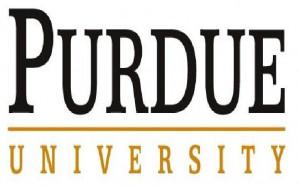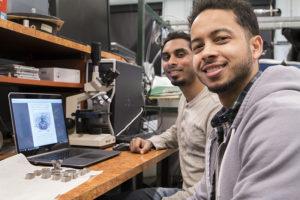 According to one of the Purdue University graduate students who recently co-founded a startup that has big plans for 3D printers, the West Lafayette, Indiana university is “one of the best aerospace engineering schools in the world.” Judging by some of the university’s amazing research we’ve written about before, like 3D printing with liquid metal and 3D printing functional toys on an EnvisionTEC Xtreme 3SP, I’d have to agree with him. Some other student projects from Purdue also utilize 3D printing, like Filasoy 3D printing filament and this 3D printed Jimi Hendrix tribute guitar. Startup Tri-D Dynamics LLC plans to use 3D printers, and other additive manufacturing processes, to make small rocket engines that could be faster and less expensive to produce than traditionally manufactured engines.
According to one of the Purdue University graduate students who recently co-founded a startup that has big plans for 3D printers, the West Lafayette, Indiana university is “one of the best aerospace engineering schools in the world.” Judging by some of the university’s amazing research we’ve written about before, like 3D printing with liquid metal and 3D printing functional toys on an EnvisionTEC Xtreme 3SP, I’d have to agree with him. Some other student projects from Purdue also utilize 3D printing, like Filasoy 3D printing filament and this 3D printed Jimi Hendrix tribute guitar. Startup Tri-D Dynamics LLC plans to use 3D printers, and other additive manufacturing processes, to make small rocket engines that could be faster and less expensive to produce than traditionally manufactured engines.
 The startup, co-founded by Purdue graduate students Alexander Finch and Deepak Atyam, plans to enter the emerging small satellite market and create small rocket engines for the future, using 3D printers. Traditional manufacturing methods could take three to four months to produce the same engines, but 3D printing cuts way back on this timeline…and the number of people involved.
The startup, co-founded by Purdue graduate students Alexander Finch and Deepak Atyam, plans to enter the emerging small satellite market and create small rocket engines for the future, using 3D printers. Traditional manufacturing methods could take three to four months to produce the same engines, but 3D printing cuts way back on this timeline…and the number of people involved.
“Typically you would need up to two machinists in addition to welders quality assurance personnel, testing personnel, and possibly more depending on complexity of the engine. With 3-D printers, ideally you will only need one or two people,” said co-founder Deepak Atyam, who received a master’s degree in aerospace engineering from Purdue’s School of Aeronautics and Astronautics.
Atyam and Finch have plans to market their technology to both governments and companies that are working on launching a new breed of small satellites called “smallsats,” which are low mass and small enough to be launched by smaller rockets.
Co-founder Alexander Finch, who is working to receive his master’s degree in aerospace engineering this May, said, “Utilizing hybrid additive manufacturing techniques to produce a liquid rocket with 2,500 to 5,000 pounds of thrust takes from maybe two days to a couple of weeks. Engines can be printed as one complete unit or as a series of components to be assembled.”

Tri-D Dynamics LLC co-founders Deepak Atyam (left) and Alexander Finch work with components and a diagram of one of their engines. [Photo: Purdue Research Foundation/Oren Darling]
We’ve touched on smallsats before, usually in the same breath as CubeSats; until recently, smallsats have been launched on larger vehicles, as secondary payloads. But several companies, including Tri-D Dynamics, are working on developing launch vehicles that are made just for smallsats, so they won’t have to hitch a ride into orbit anymore. The Purdue startup’s plan is for the “launch vehicles to employ clusters of their engines positioned on the vehicle to lift the payload.” So the more engines that are used for liftoff, the larger the actual payload capacity.
Finch explained that none of these vehicles have launched yet, and that if their first launch in mid-2017 is successful, things should “ramp up pretty quickly.” The goal is to allow more launches over shorter time frames, by upscaling their production of engines.
Atyam said, “Our goal is to see these rockets launching once or twice a week. And that’s a minimum of 10 to 20 engines per week when you get to that scale. Nobody right now can stamp out engines at that rate.”

#BowserTheEntrepreneur, who seems to be the Purdue Foundry mascot [Image: Purdue Foundry]
Finch said, “We didn’t see anything like SV BIG undergrads in California. To have a dedicated alumni group of entrepreneurs in Silicon Valley dedicated to helping companies from that university is a wonderful asset.”
The Purdue Foundry recommends that their relevant startups pitch ideas to the SV BIG group, which is dedicated to assisting new ventures from Purdue, and then they decide which ones to help. SV BIG is full of Purdue alumni who are now Silicon Valley professionals, who can offer Purdue Foundry startups advice in areas like venture capital, legal counsel, and startup leadership.
 So, what is the plan for Tri-D Dynamics going forward? Finch and Atyam are working to prove that their engine clusters on smallsat launch vehicles idea is viable, and are currently looking for investors, as well as seeking funding from the US government.
So, what is the plan for Tri-D Dynamics going forward? Finch and Atyam are working to prove that their engine clusters on smallsat launch vehicles idea is viable, and are currently looking for investors, as well as seeking funding from the US government.
“We hope to gain a large market share of the rocket engine production industry. Most others produce them through conventional methods or outsource them to machine shops. We want to be the one-stop-shop to be able to create rocket engines on a large or small scale,” said Atyam.
Discuss in the Purdue Startup forum at 3DPB.com.
[Source: Purdue]Subscribe to Our Email Newsletter
Stay up-to-date on all the latest news from the 3D printing industry and receive information and offers from third party vendors.
You May Also Like
Precision at the Microscale: UK Researchers Advance Medical Devices with BMF’s 3D Printing Tech
University of Nottingham researchers are using Boston Micro Fabrication‘s (BMF) 3D printing technology to develop medical devices that improve compatibility with human tissue. Funded by a UK grant, this project...
3D Printing Webinar and Event Roundup: April 21, 2024
It’s another busy week of webinars and events, starting with Hannover Messe in Germany and continuing with Metalcasting Congress, Chinaplas, TechBlick’s Innovation Festival, and more. Stratasys continues its advanced training...
3D Printing Webinar and Event Roundup: March 17, 2024
It’s another busy week of webinars and events, including SALMED 2024 and AM Forum in Berlin. Stratasys continues its in-person training and is offering two webinars, ASTM is holding a...
3D Printed Micro Antenna is 15% Smaller and 6X Lighter
Horizon Microtechnologies has achieved success in creating a high-frequency D-Band horn antenna through micro 3D printing. However, this achievement did not rely solely on 3D printing; it involved a combination...





























